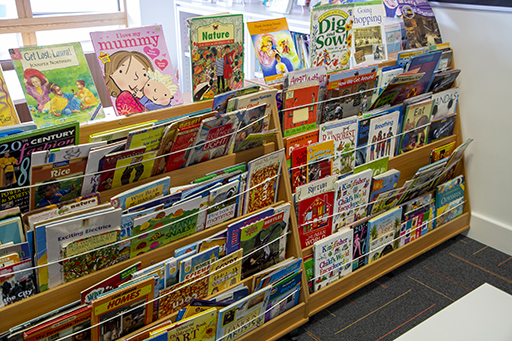1 The role of educators’ knowledge of children’s texts
As in previous sessions, the reference to children’s texts reflects the broad range of text types that children might choose to read in their own time. Whilst encouraging children to read high quality books (that might be referred to as literature) is important, so too is ensuring that all readers have a broad reading diet. Comics and magazines may be a regular reading choice for some children, alongside graphic novels, poetry and non-fiction texts. Knowledge about a wide range of different types of text is therefore important for any adult hoping to entice children to read.

To begin this session, complete the activity below, which will enable you to reflect on your current knowledge of children’s texts.
Activity 1 Audit your knowledge of children’s texts
Without looking at your bookshelves or searching the internet (!) can you name:
- three children’s authors;
- three picture fiction creators;
- three poets;
- three non-fiction texts for children;
- three children’s comics or magazines?
Now look at your list and make a note on the following points.
- Did you struggle with any of the categories more than the others? If so, which ones?
- Did you find you could name book titles but not authors?
- Did your lists include authors/ illustrators/ texts from your own childhood reading?
- Did your lists include celebrity authors (e.g. David Walliams), or exceptionally well-known authors that have become celebrities (e.g. J.K. Rowling, Michael Rosen)?
- Do your lists reflect social and cultural diversity?
Comment
As you reflect on your responses to the questions above, you will begin to get a sense of your reading repertoire, and areas where your knowledge is well-developed or needs some attention. You might like to write a statement of intention identifying where and how you plan to develop your knowledge.
Statement of intention: I need to develop my knowledge of ….
Previous research indicates that primary teachers tend to draw on a limited range of texts, often based on their own childhood reading or well-known celebrity authors (Cremin et al., 2014). This study also found that teachers had particularly limited knowledge of poetry and picture fiction. These limited repertoires were mirrored in a National Literacy Trust Survey drawing mainly on secondary teachers, which revealed that their reading repertoires were inadequate and that they were not able either to offer young people a comprehensive range of contemporary and classic texts (Clark and Teravainen, 2015a). Framed by this narrow professional knowledge, the young people’s ‘favourite books’, were also narrow and tended to include texts that had become well-known through film adaptations such as Harry Potter (J.K. Rowling) or The Hunger Games (Suzanne Collins). This is evident in the wordle in Figure 1, representing some of the most frequently named books that children and young people said they read in a survey by the National Literacy Trust survey in 2014. These studies highlight that the range of texts and authors available to many children may be restricted and lack diverse representation.
Watch the following video clip, in which Teresa Cremin professor of education at The Open University and Claire Williams, from St Andrews Church of England Primary school, discuss the findings of research examining teachers’ knowledge of children’s texts and the importance of continually developing that knowledge.

Transcript: Video 1
Now you have considered your current knowledge of children’s literature, the next section will help you consider the broad range of text types you can add to your reading repertoire and the different purposes they serve for young readers.

